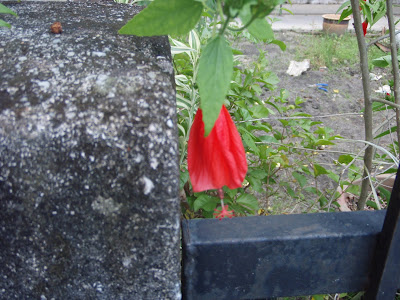

The nice old lady living next to me told me that my other neighbour told her to get rid of all the ZZ plants or Eternity plants (Zamioculcas zamifolia) in her garden as she said that they were poisonous. Today the daughter-in-law of my mum's neighbour told her not to place the ZZ plant inside the house as it is supposed to give out poisonous gases.
I can remember my same neighbour wanting me to give her some shoots of the ZZ plant in my garden a couple years back as she said that they were supposed to bring good luck to the household. Now this turnaround. How the fate of this plant has changed!
Anyway I am not one to just BELIEVE if someone tells me so especially if that someone is not an expert on the subject. I have already done a post about this particular plant but am doing a more detailed one here since I wanted to findout more. I did a search in the Internet and I can tell my mum not to move the ZZ plant from its place near the window. Also my mum is not in the habit of eating the ornamental plants that she grows in her garden. As far as I know my dog, Angel, does not fancy eating the plant either. Furthermore, I believe cats and dogs have an innate sense of what greens to eat and what not to eat for their survival.
Here is information about the plant.
Scientific name: Zamioculcas zamiifolia
Common names:
ZZ plant, Eternity plant, Fat Boy, Aroid palm, Zu Zu plant, Succulent philodendron , Golden tree, Arum Fern
Family: Aroid
Botany
An evergreen plant that grows from a stout underground, succulent water-storing rhizome, attaining a height of 45-60 cm. Leaves are pinnate, 40-60 cm long, with 6-8 pairs of leaflets 7-15 cm long, smooth, shiny and dark green. Flowers are small bright yellow to brown on bronze spadix 5 cm long. ZZ is also called the Eternity Plant because it lasts an eternity.
Caution !
All parts of the plant are reported poisonous to humans and animals if ingested.
Uses
With its air-purifying quality, it is in the list of "Plants that Detoxify the Air."
Studies
Air-purifying: Research studies showed ZZ to be one of the plants most effective in counter-acting off-gassed chemicals and maintaining a balanced internal humidity.
References:

















































